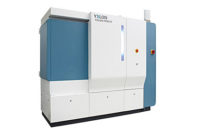Due to the critical nature of nondestructive testing (NDT) in ensuring the safety and reliability of a plant, infrastructure, or facility, any technician performing NDT has to be trained and certified by an accredited body in accordance with international or regional standards such as ISO 9712, EN473, and ASNT. However, the certification process can be a labyrinth of complicated certification schemes and regulatory requirements that vary greatly depending on customer needs, industry specifications and regional standards. This article will aim to shed some light on these areas with an overview of current trends that are expected to impact the NDT training and certification industry.
The Training-Certification Nexus
According to Larry Cote, President and CEO of the Canadian Institute for NDE, there are distinct differences when it comes to training and certification. “The first thing to do when discussing training and certification is to clearly address the fundamental difference between the two: training helps an individual to learn about the core knowledge and skills whereas certification assesses the ability of an individual to apply the core knowledge and skills.”
NDT training is offered across the globe by a wide variety of independent training institutes and academies that can vary from technical schools, colleges and industrial and corporate institutions. However, training is just a part of the various requirements for certification. Market feedback indicates that the average age of a certified NDT inspector varies between 50 to 55 years. With several of these experienced personnel expected to retire over the next few years, along with an influx of increasingly complex NDT procedures, industry experts anticipate a wide knowledge gap in the NDT space.
Although there are similarities between the various certification schemes there are also several differences. For an upcoming NDT technician, the realm of NDT certification can be daunting and difficult to comprehend with the requirements being interpreted differently across the globe. New trainees or technicians need to be aware of a variety of central, employer-based and industry-specific certification schemes.
“The international standard referenced by many countries for NDT training is ISO 9712:2012 Non-destructive testing — Qualification and certification of NDT personnel,” said Cote. “The ISO 9712 standard describes a multi-sectored approach, which means that the people qualified and certified according to it will have a cross section of NDT knowledge applicable to the materials and processes found across various industry sectors. Canada helped lead the development of ISO 9712, and in 1995, it was adopted as a national standard by the CGSB 48/2 Committee in Canada as CAN/CGSB 48.9712.”
In 1966 ASNT introduced SNT-TC-1A, which till today remains the most popular scheme for NDT certification in the United States. However, as the case with most employer-based schemes, SNT-TC-1A continues to face criticism as there are apprehensions about the integrity of the program.
“Unlike ISO 9712, and as the name suggests, SNT-TC-1A is a recommended practice or guideline, and not a national or international standard,” said Cote. It is typically used to guide the development and delivery of an employer defined second-party certification program when they feel that approach will adequately meet their needs.”
In Europe, EN 473 is the predominant standard for the qualification and certification of NDT technicians, although most European countries have their own national personnel certification scheme, such as Nordtest in Scandinavia and Cofrend in France. There were significant differences between ISO 9712 and EN 473, however since 2008 several revisions have made the two standards more aligned with each other.
In addition, industries such as aerospace and the military specify their own certification standard. Initially, the United States Air Force and Army issued a standard termed MIL-STD-410, which required all inspection service companies performing NDT on government contracts to abide by this standard. This standard was replaced by NAS-410 in the late 1990s.
“The National Aerospace Standard - 410 (NAS-410) published by the Aerospace Industries Association. It outlines the minimum qualification requirements for personnel that perform nondestructive testing in the aerospace and defense industries. Therefore it is considered a sector specific standard, as opposed to the multi-sector ISO 9712,” Cote said.
Industry Trends Driving the Need for NDT Training
Despite these complexities, the need for NDT training is clearly evident. Frost & Sullivan’s research on the global NDT inspection services market highlighted the lack of skilled technicians as one biggest challenges faced by the industry. Over the past decade there has been a gradual decrease in the availability of skilled technicians, which can be attributed to a few reasons. The United States in particular is currently witnessing a lack of technicians certified in ultrasonic testing (UT) due to the paradigm shift to phased array ultrasonic testing (PAUT) from radiography for weld inspection in pipelines. The cost-effectiveness, usability and safety benefits of ultrasonic testing over radiography has caused a sudden surge in demand over the last five years for UT-certified testers, and the industry has struggled to keep pace with this demand.
Another factor for the drive toward PAUT in the United States is the backing it has received from the various standard bodies. Presently, the American Society of Mechanical Engineers (ASME) is the only body that has published well-defined standards for phased array ultrasonic testing. American Society for Testing and Materials (ASTM) and American Petroleum Institute (API) back the standards published by ASME and have also introduced a set of additional procedures to be followed for PAUT.
Furthermore, a majority of training institutes are not up-to-date with the latest technological advancements. As such, technicians are not exposed to the state-of-the-art equipment that is being requested by end user industries. This acts as a major restraint for the NDT service providers, as they are required to retrain technicians in these advanced technologies. As a result, they need to invest in training, which leads to loss of revenue as they lose weeks of billable time associated with training personnel.
This requirement for NDT training, however, creates a strong business opportunity for NDT service companies offering training as part of their service portfolio. SGS’s NDT Training Center in China is well recognized for its state-of-the art training, examinations and certification. Hellier, which is part Rockwood Service Corporation—Acuren’s parent company—is considered one of the leading providers of NDT training services in North America.
In recent years, NDT equipment vendors have also pursued this business line. In 2012, GE Measurement & Control launched the GE Inspection Academy, which offers classroom training courses as well as online training options. Olympus NDT also has established a Training Academy in which it associates with training partners and institutes across the globe to offer a wide variety of courses. With the big players in the NDT inspection services and the NDT equipment markets making a foray into training, it is expected that the impact of the challenge associated with a lack of latest technologies and instruments at existing training institutes will diminish.
Online NDT Training—The Next Big Thing?
Although the classical classroom approach to NDT training is alive and well, improvement in communication and computing technology has led to a growing interest in online training. There have been some apprehensions about training online due to the lack of a hands-on experience; however, there are numerous advantages the benefits of classroom training.
According to Parker Ray, Director of Operations for World Spec Testing Services, there has been a positive reaction from the NDT community to this new trend of training.
“NDT service companies welcome online training. In order for the NDT services companies to train someone they have to ship them to a big city center, pay for the course, pay for the hotel accommodations for five days and pray that the student passes the exam because if they don’t they’ll have to repeat the whole thing,” said Ray.
Ray further added that because companies like World Spec Testing Services don’t have to lease spaces or pay their instructors for 40 hours of teaching, these companies “can provide a much cheaper avenue for NDT service companies. He also stated that students taking the online courses likewise look favorably on this type of training.
“Students like online training as well, because they don’t have to complete the course in five days like they would have to in a classroom, they can take up to a year, which is good, in case they are working. So there is no pressure that way on the student,” said Ray.
Ray believes that online training is the future. World Spec Testing Services was one of the first companies to bring the concept of online NDT training to the world.
“When a student signs up, they have instant 24-hour access to the course,” said Ray. “We offer dynamic PowerPoint presentations, videos, and flash quizzes at the end of each chapter, basically an interactive and well-rounded learning experience. Everyone learns differently, some learn better visually and some are audio learners, so we try and hit as many options as we can. Once they are done taking our course they can take an exam completely online.”
Several other web-based NDT training companies, such as the American Institute of Nondestructive Testing, and NDT Classroom, Inc. have sprung up in recent years, which is further testament to this growing trend toward online training.
Donald R. Booth, CEO of American Institute of Nondestructive Testing believes it is only a matter of time before the world fully embraces the idea of online NDT training.
“In today’s education a person can attain an engineering degree, business administration degree, nursing degree, psychology degree, and hundreds of others; all online, there is no reason for our industry to ignore the future of education. We must embrace online education to train the next generation of NDT examiners,” said Booth.
Although, there are apprehensions within the industry about online training, Frost & Sullivan believes the NDT industry can no longer hold itself back and needs to flow with the technological evolution witnessed globally. We believe the online training is here to stay and that over the next five years, the number of students taking online training courses will increase steadily. With greater demand for online NDT training, there will be an increase in competition in this space that has seen Worldspec.org as its flag bearer over the past seven years.




